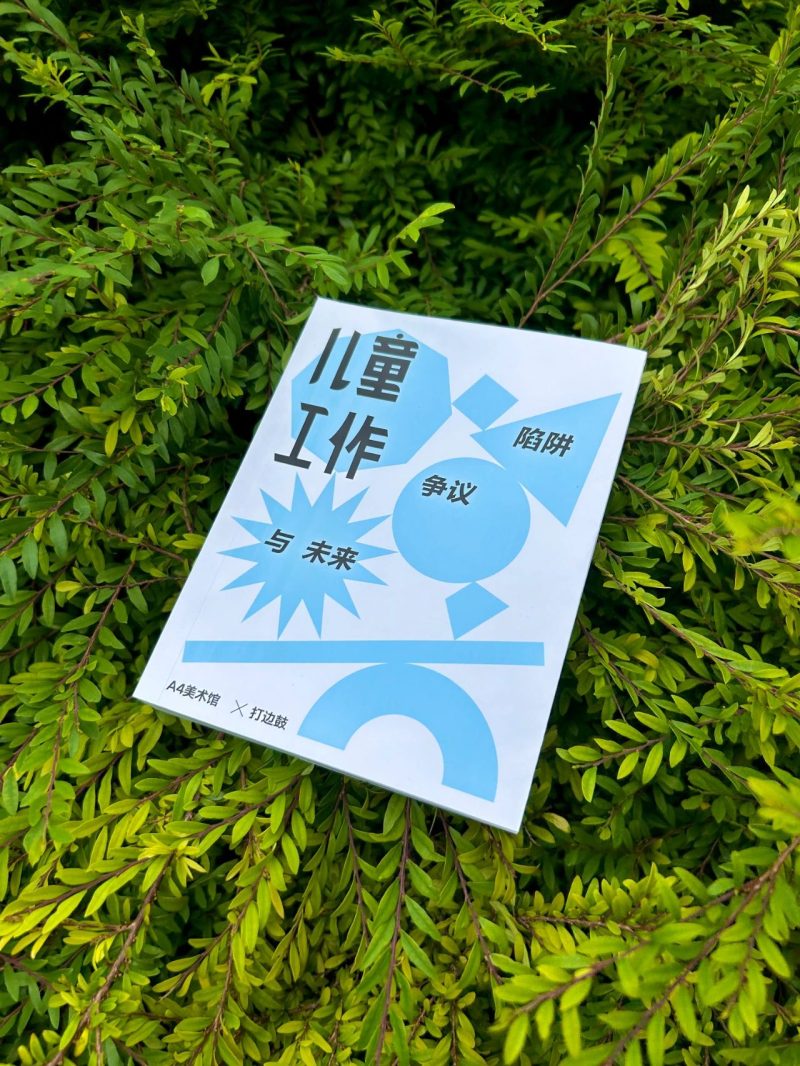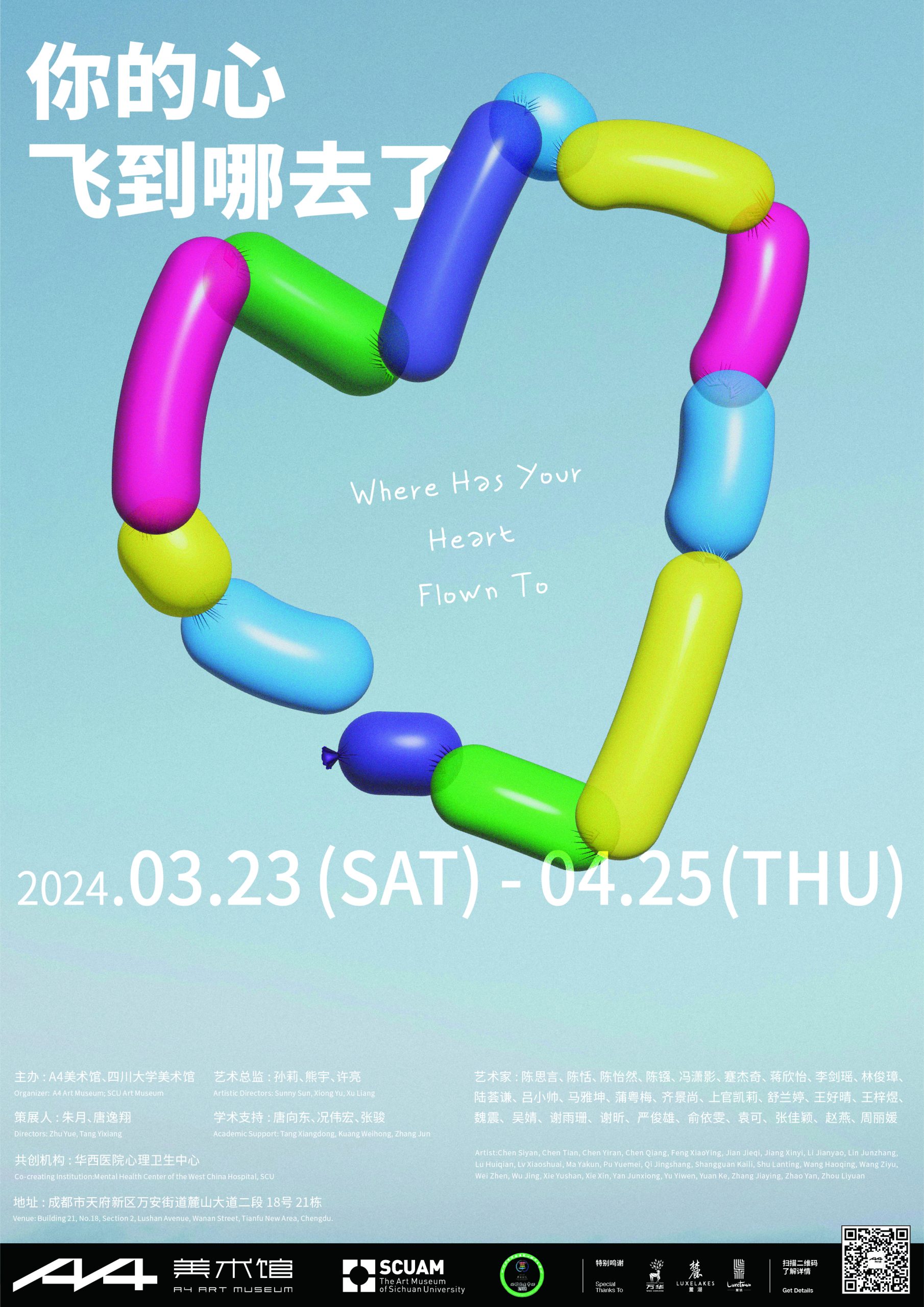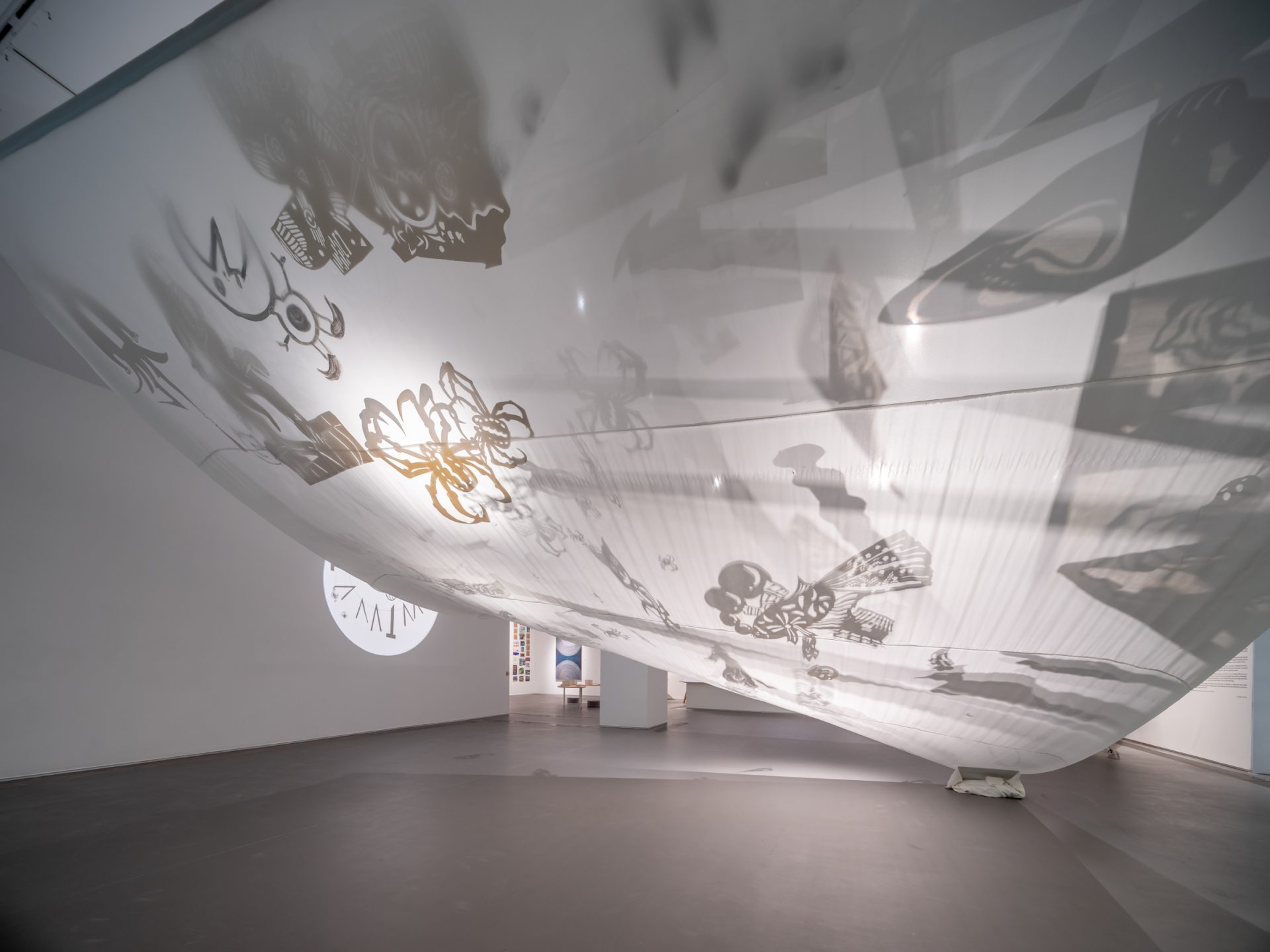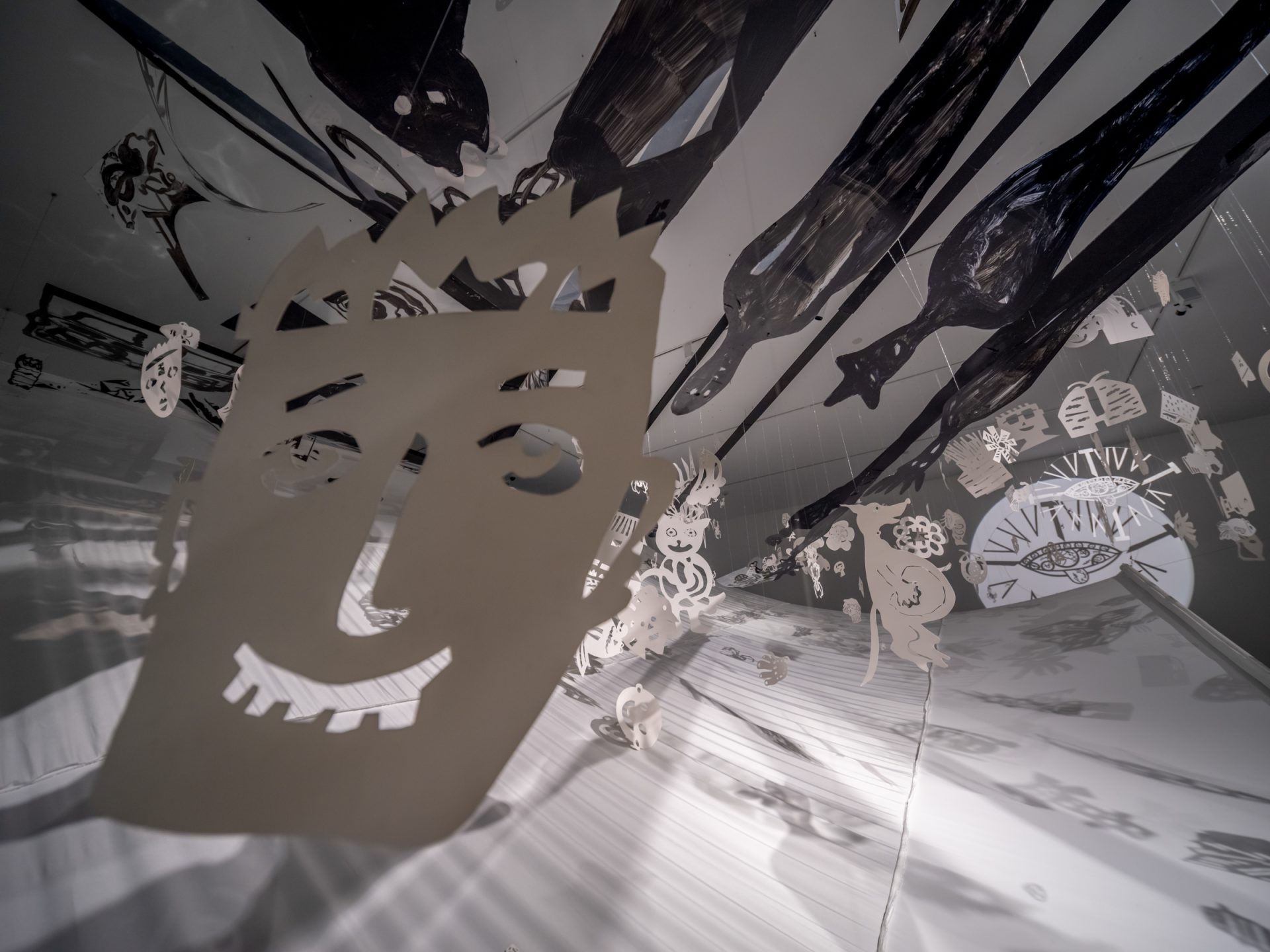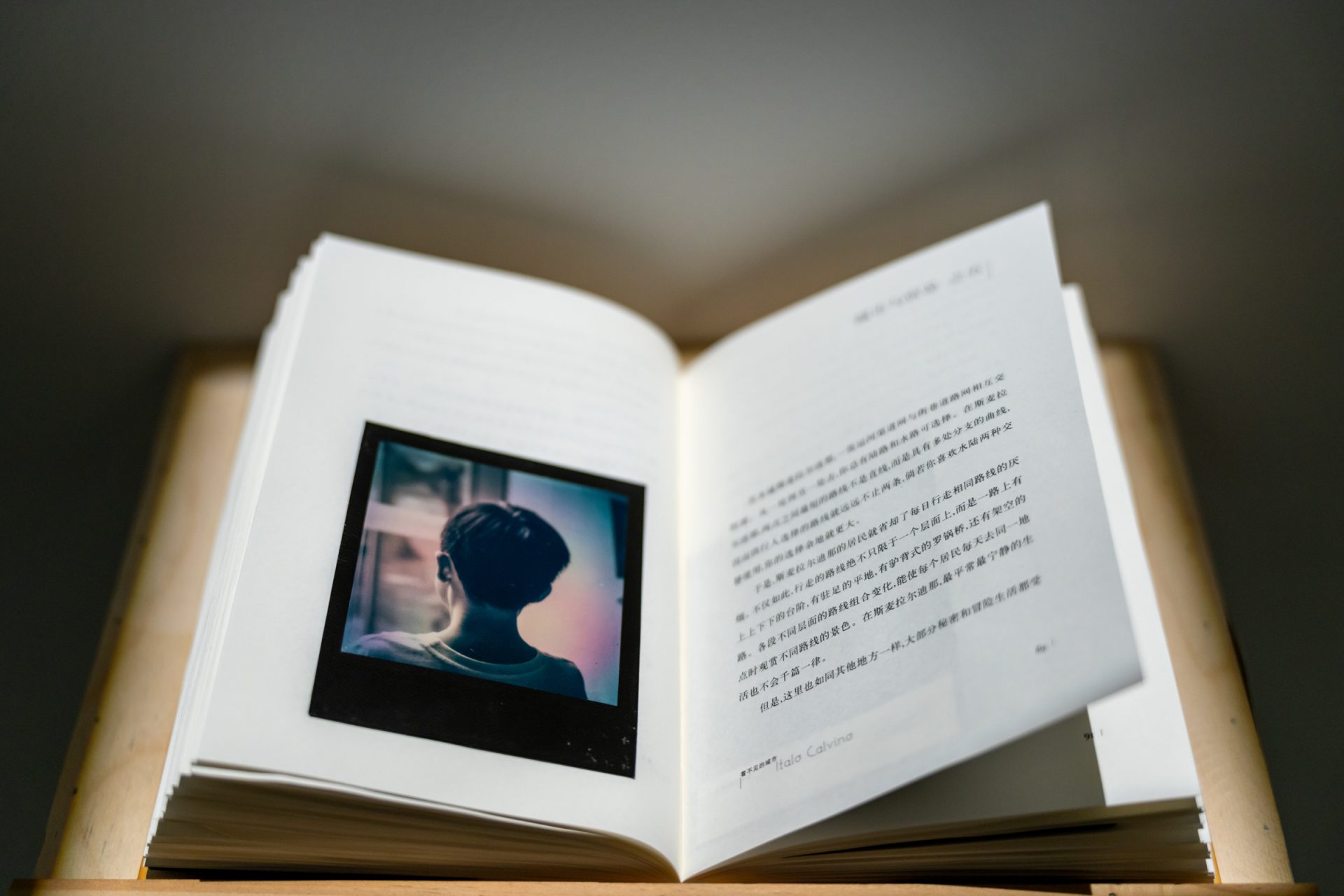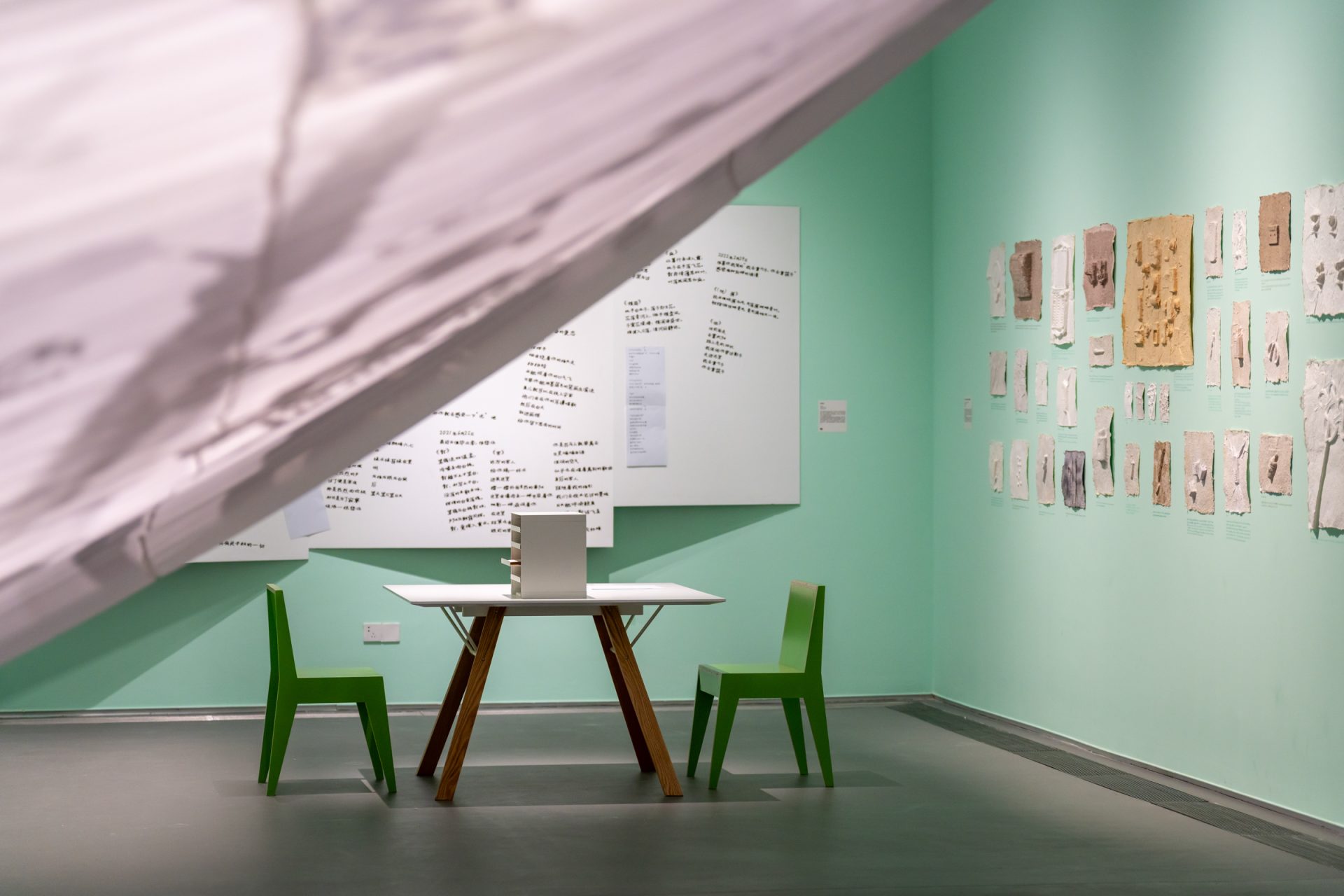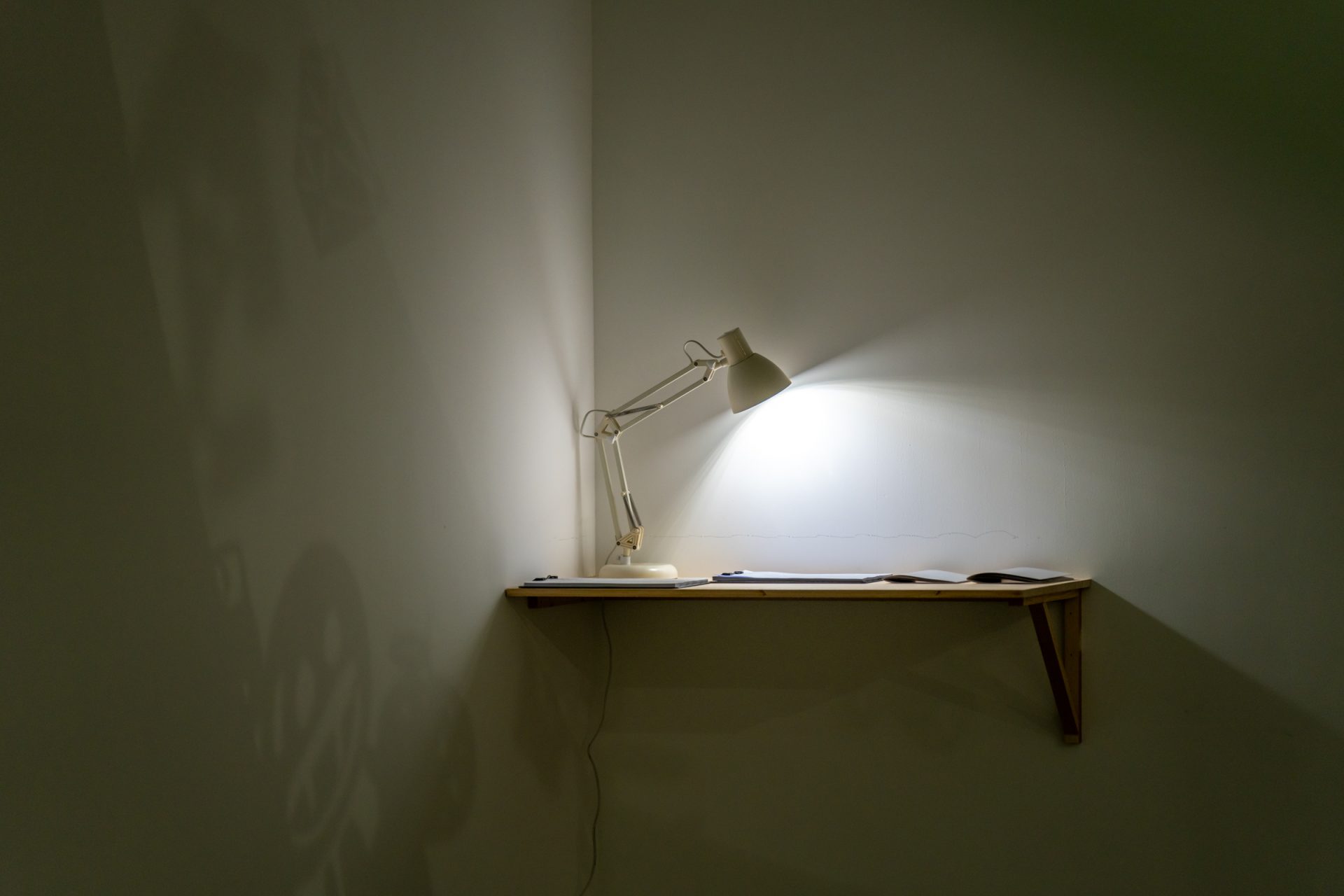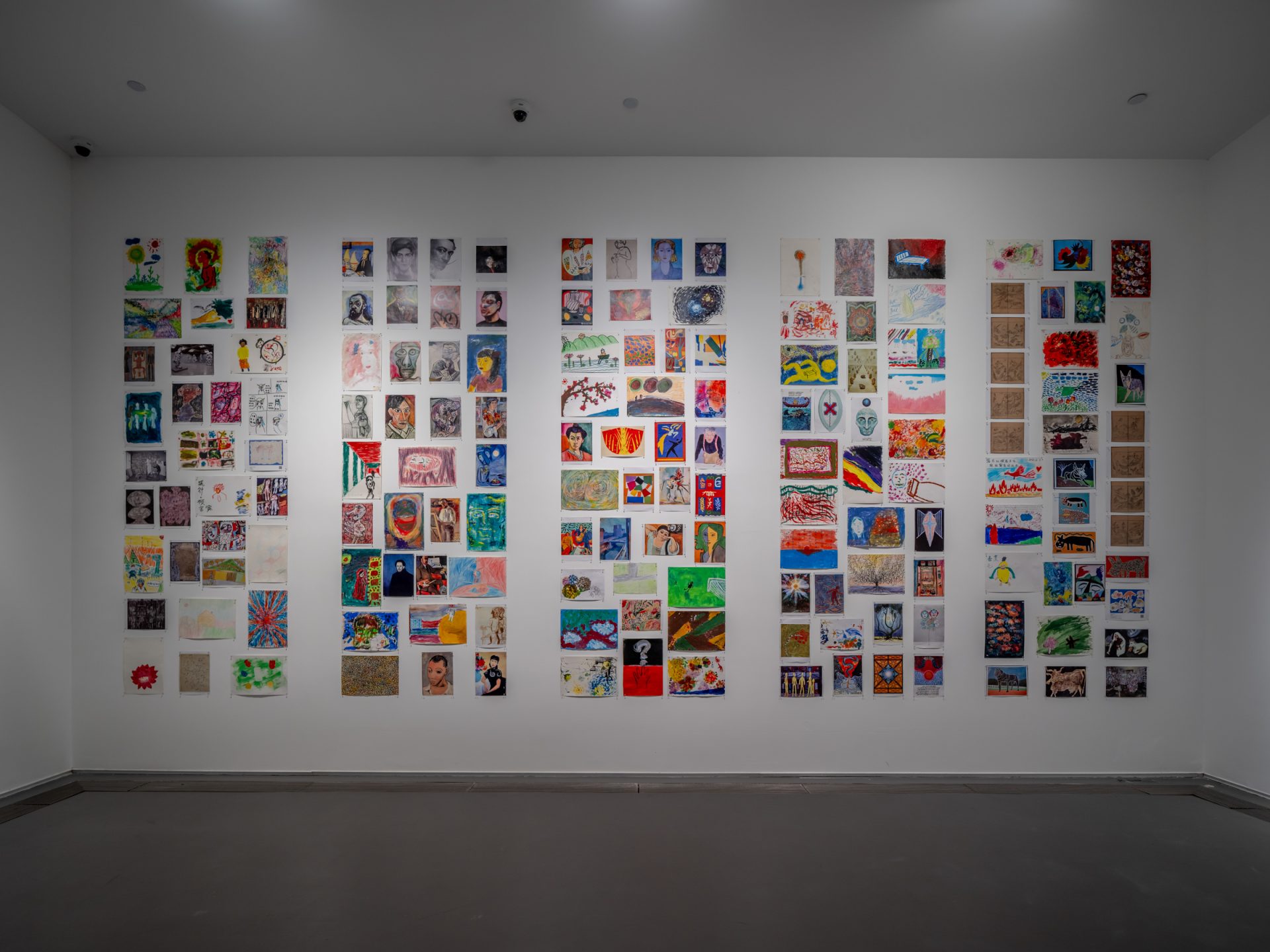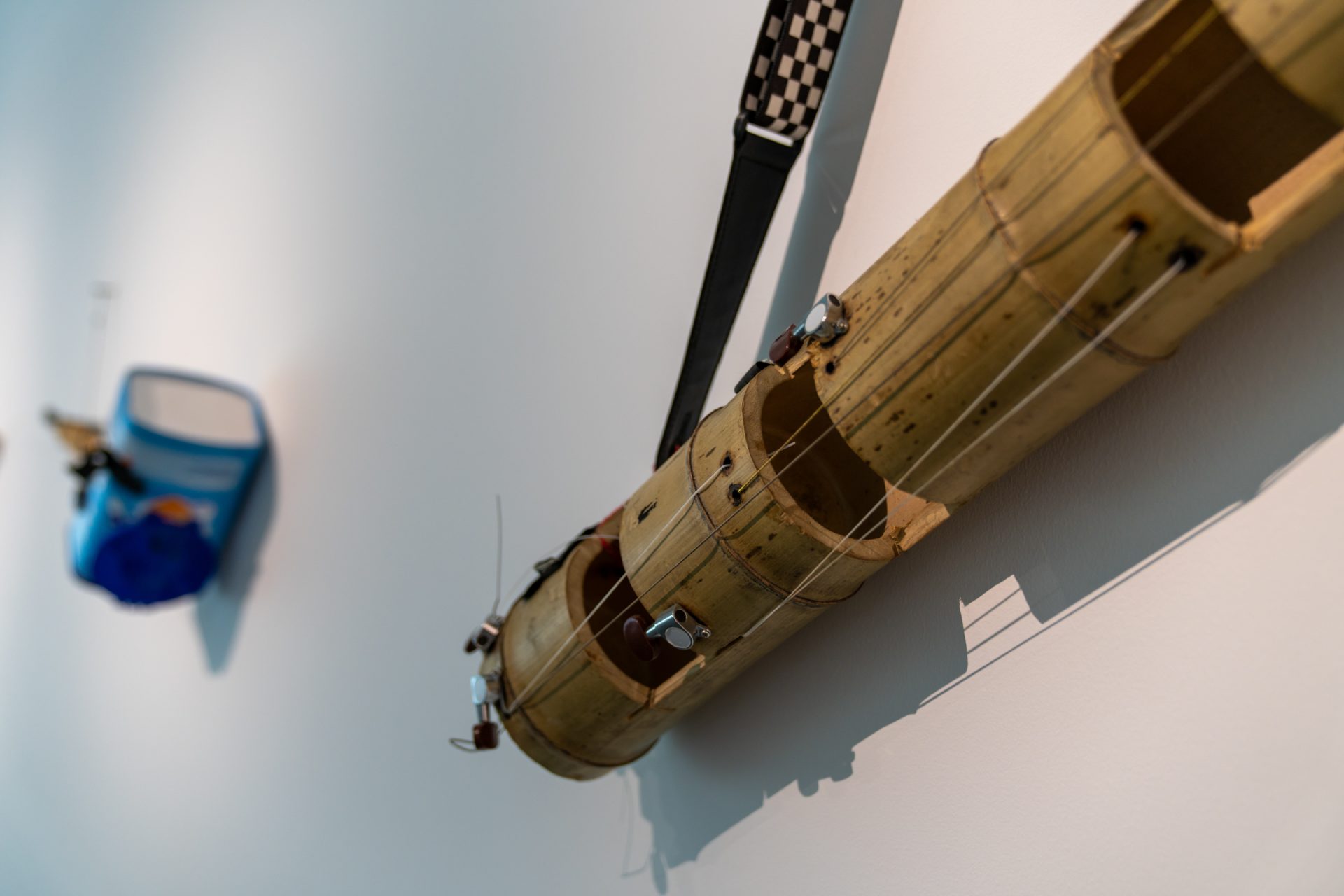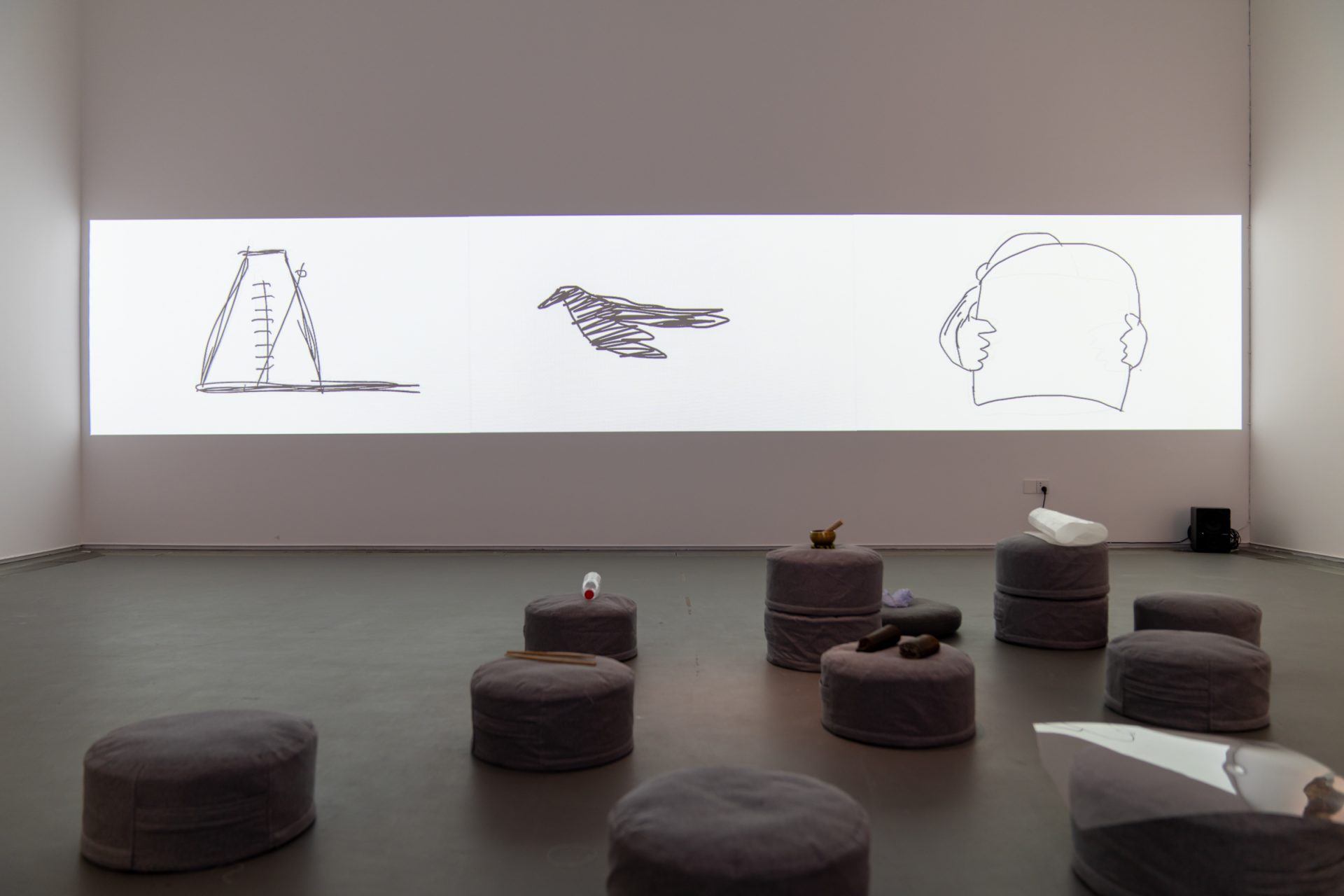Where Has Your Heart Flown To?
“Where has your heart flown to?” is a simple question people often ask in daily life. Sometimes, it is a question about poor concentration, a pursuit of our own thoughts or an intimate greeting between lovers. The “heart” is always about our cognition and attitude towards the world. It bothers both ancient people and us today. Perhaps, now more than ever, we need to ask, “Where has your heart flown to?”
Since March 2021, the interdisciplinary art project “Art X Design X Psychology” at Sichuan University has been underway for three years. During these three years of “experimentation”, we have gathered clinical medical workers, artists and designers to explore the boundaries of and overlaps between art, design and psychology and try to answer a same question: How can we make society and individuals’ mental health better?
Unlike the previous stages of the project which displayed its outcomes, , this exhibition, co-curated with A4, consists of several workshops conducted in wards. Artists/designers in each workshop aim to stimulate patients’ creativity, and thus allow us to perceive the deeply buried creativity in each person and recognize the positive connection and effects of art on the psychological and spiritual levels.
From the Invisible to the Visible, from Seeing to Understanding: In the “Heart Traces”photography workshop, the focus of each camera reveals the unity of patients’ inner spirit, natural environment, and external expressions, allowing doctors to “clearly see” the patients’ psychological composition and surrounding relationships, promoting friendly behaviors. The Invisible Faces vividly displays the patients, allowing us to see them in reality.
Finding the Hidden Artist Within: Believing in the healing power of painting, artists guide patients in finding the right way to express and soothe emotions through lines, colors, or light and shade and to affirm even negative expressions through heartfelt emotional exchanges. Tell Me a Story combines narrative metaphors with sticker drawing in a children’s healing design. Based on the repsect of children’s autonomy, it allows easy, comfortable conversations in an inclusive environment.
Consciousness Emergence, Symbols, and Representation: Through games, textiles, sand art, and other media, artists help patients reconnect themselves and their primal creativity, , telling them that “I” can also paint. Multisensory stimulation through touching, hearing, and seeing, and the playful nature of painting open up multiple levels of consciousness, integrating form and content, symbolizing the real spiritual world, and showcasing the transformative life force of individual creativity.
Sound and Music, a Collective Adventure in Sound: Artists collaborating withmedical staff, and patient-organized band the 28 South Street used daily objects like chairs, plastic sheets, and chopsticks to make sounds. Participants will imagine themselves as clouds and transform into raindrops in the adventures, joining streams, rivers, and seas, standing up again under the shelter of music.
Daily Creation and Building Relationship: How to achieve self-healing? Starting with genuine expression, integrating the self on a spiritual level through drawing and writing on calendars. From solitude to relationships with friends and communities, we attempt to regenerate new relationships between people and people as well as people and objects through daily creation.
Italo Calvino believed his Invisible Cities was like the last love poem to cities at a time when it was increasingly difficult to live in cities as cities.[ Italo Calvino, Invisible Cities, translated by Zhang Mi, Nanjing: Yilin Press, 2006.] This exhibition aspires to do the same. We hope to present not just the psychological experiments by artists/designers but to rediscover the real, growing, vibrant individual creativity within. It is this creativity that uncovers the hidden connection between art and psychology on a spiritual level, realizing the positive impact of art on human psychology.
Same with A4 colleagues who deeply engaged with children and communities, the reflexivity of creating with more specific individuals, the coexistence and mutual reflection of artists/designers, medical staff, patients, and other participants, continuously triggers our re-exploration of the essence of art.
——Zhu yue, Tang Yixiang
